Oct 28, 2025 10:47 AM
In Memoriam: Jack DeJohnette, 1942–2025
Jack DeJohnette, a bold and resourceful drummer and NEA Jazz Master who forged a unique vocabulary on the kit over his…

Dave Liebman’s Earth caps a series of albums inspired by natural elements.
(Photo: Ray Cho)“And because of my leg, I had a lot of interaction with doctors,” he continued. “One thing that impressed me was when a doctor walked in the room, everybody got real quiet. People immediately gave respect, and my mother talked about them like they were God. So, I did want to be a doctor. As a kid, you get interested in different things and usually it’s a passing fad, but I became obsessive about it. I read books on orthopedic surgery. I knew more about anesthesia than the doctors knew. And that kind framed my life.”
His jazz epiphany would come at age 15, after seeing John Coltrane at Birdland in February 1961. “I’m sitting there wondering, ‘Is that the same instrument I have on my bed that I practice one hour a day with?’ This was the band with Trane and [Eric] Dolphy, and I couldn’t really recognize what they were doing, but I could feel it,” Liebman said. “I remember thinking, ‘I don’t know what they’re doing, but whatever it is, I want some of it.’”
By the late ’60s, Liebman occupied a loft in a building on 19th Street near Sixth Avenue, where his neighbors on other floors included Chick Corea and Dave Holland. Jams took place in lofts of innumerable other musicians, including bassist Gene Perla and percussionist Don Alias near the Fulton Street Fish Market, and drummer Bob Moses in the Bowery on Bleecker Street.
So Liebman made his spot appealing to other musicians. “The day I walked into my place, I got it ready quickly, because I knew that if I had drums, piano and a bass, people would come,” he recalled. “We weren’t really supposed to play after work, but there was music happening in that loft at all hours of the day.”
He eventually sold his 1,200-square-foot loft to a 21-year-old Michael Brecker, who was new on the scene and eager to participate in frantic jams with other Coltrane-inspired tenor players. Later, Brecker and his brother Randy would form the jazz-rock-pop band Dreams, and Liebman would pursue a somewhat similar aesthetic with Ten Wheel Drive, which is where he first began playing soprano saxophone to fill out the group’s innovative horn arrangements.
“Mike and Randy would go on to play with Horace Silver, and I would go on to play with Elvin Jones,” Liebman said. “So, we all got into playing more straightahead after the loft scene.”
Following his two-year stint with Jones, Liebman officially joined Miles Davis’ electric crew in January 1973, though he had participated in the landmark On The Corner sessions the previous summer. “People hated On The Corner,” he recalled. “They couldn’t figure out what he was doing, and to be honest, during my first six months with him, I really didn’t know what he was doing, either. I couldn’t psyche it out, I couldn’t knowledge it out ... . But one day, I suddenly heard it, and it made sense to me. And I told him, ‘Miles, I think I got it!’ And he said, ‘I told you you would.’ And he seemed happy, because he could see that he had another convert.”
Up until that point, Liebman’s parents had registered the typical worries about his career choice. “They would say, ‘Do you know what you’re doing? What’s a gig? How do you make money from this? What are you gonna do when we’re not here?’ But finally when we did Dark Magus at Carnegie [on March 30, 1974], and they sat in the audience and watched me play with Miles, my mother said, ‘Well, you must be good! You’re at Carnegie Hall!’ She didn’t completely understand it, but at that point she admitted, ‘I guess you know what you’re doing.’
“And my father, who was strictly into classical music—Tchaikovsky, Brahms—was completely perplexed by the whole thing. He said to me, ‘How do you guys do it? Your eyes are closed, you don’t talk to each other, there’s no music in front of you. ... It’s like miracles.’ And that naive, clear statement of fact was true.”
During his tenure with Davis, Liebman primarily played soprano, but mostly as a practical matter. “I couldn’t hear myself on tenor because Miles’ music was so loud,” he said. “We had three guitars at one point, with Pete Cosey, Reggie Lucas and Dominique Gaumont. I was a little frustrated in that group because I couldn’t hear a note. I was always thinking, ‘What I am doing here with these three guys who can press a pedal and sound like an orchestra?’ So, I told Miles, ‘You don’t need me. Why don’t you just keep it with the guitars?’ And he said, ‘People like to see you move your fingers.’ So, I stayed, and I was able to cut through a lot better with the soprano.”
Liebman later would devote 15 years (1980–1995) exclusively to the soprano saxophone. “Giving up the tenor was a major step, and it was [pianist] Richie Beirach who strongly encouraged me to do it,” Liebman explained. “He said, ‘Go to what’s your strongest thing. Don’t fuck around with the tenor.’ And I remember saying to him, ‘What about those tunes we play like ‘Impressions’ and all that burning shit? How am I gonna do that without the tenor?’ He said, ‘Hey, you gotta make it work on soprano.’ Eventually I found that there was a possibility of finding something in the soprano that could be me.”
In 1986, Liebman released the daring solo soprano saxophone album The Loneliness Of A Long Distance Runner. “I was fascinated by the title of that book and felt some parallels in my own thing,” he said, referring to British writer Alan Sillitoe’s 1959 short-story collection, The Loneliness Of The Long Distance Runner, which later was turned into a film.
“What we do in playing a solo instrument is a little like being a long-distance runner. You’re out on your own, and you gotta come up with something. We’re in this lifestyle to find something of beauty, and it’s a lonely track in the end.”
Liebman’s unaccompanied piece “Soprano Saxophone Interlude” from Earth harkens back to his evocative work on Loneliness. Another recent example of his signature soprano playing can be heard on his collaboration with guitarist John Stowell for 2018’s Petite Fleur: The Music Of Sidney Bechet (Origin). “That album was, of course, very idiomatic and in his style,” he said. “And what I discovered is what a great writer Bechet was.”
The saxophonist’s move back to New York has allowed him to be more active in the bustling Big Apple jazz scene that once nurtured him. In January, he was seen stretching on standards at Brooklyn’s Made in New York Jazz Cafe with Perla on bass and Lenny White on drums, both jamming partners from the late-’60s loft scene. In the intimacy of that Park Slope nightclub, they swung ferociously on renditions of jazz staples. And while standards remain close to Liebman’s heart, his adventurous, forward-thinking agenda on Earth reflects an artistic restlessness as vibrant today as it was decades ago. DB
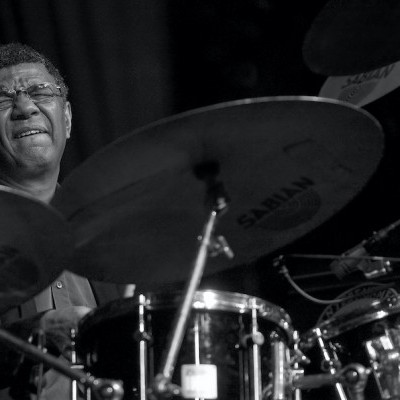
Jack DeJohnette boasted a musical resume that was as long as it was fearsome.
Oct 28, 2025 10:47 AM
Jack DeJohnette, a bold and resourceful drummer and NEA Jazz Master who forged a unique vocabulary on the kit over his…
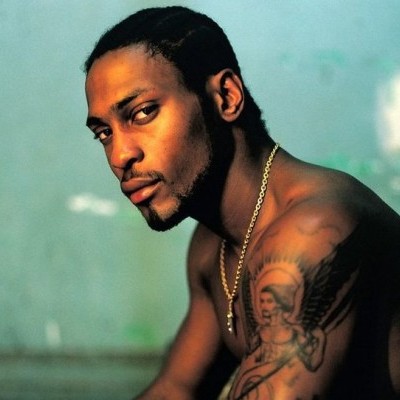
D’Angelo achieved commercial and critical success experimenting with a fusion of jazz, funk, soul, R&B and hip-hop.
Oct 14, 2025 1:47 PM
D’Angelo, a Grammy-winning R&B and neo-soul singer, guitarist and pianist who exerted a profound influence on 21st…
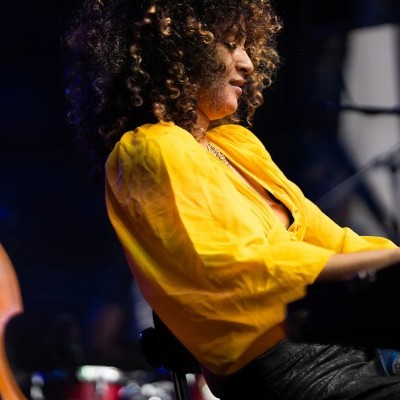
Kandace Springs channeled Shirley Horn’s deliberate phrasing and sublime self-accompaniment during her set at this year’s Pittsburgh International Jazz Festival.
Sep 30, 2025 12:28 PM
Janis Burley, the Pittsburgh International Jazz Festival’s founder and artistic director, did not, as might be…
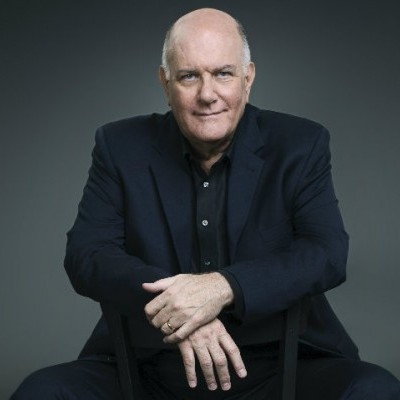
Jim McNeely’s singular body of work had a profound and lasting influence on many of today’s top jazz composers in the U.S. and in Europe.
Oct 7, 2025 3:40 PM
Pianist Jim McNeely, one of the most distinguished large ensemble jazz composers of his generation, died Sept. 26 at…
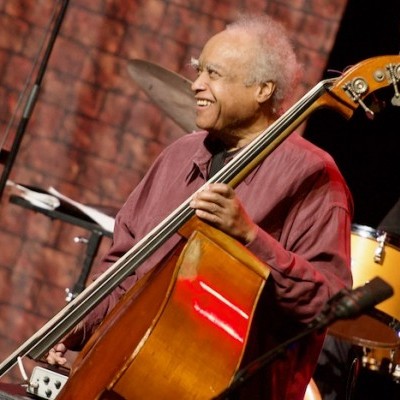
Drummond was cherished by generations of mainstream jazz listeners and bandleaders for his authoritative tonal presence, a defining quality of his style most apparent when he played his instrument unamplified.
Nov 4, 2025 11:39 AM
Ray Drummond, a first-call bassist who appeared on hundreds of albums as a sideman for some of the top names in jazz…